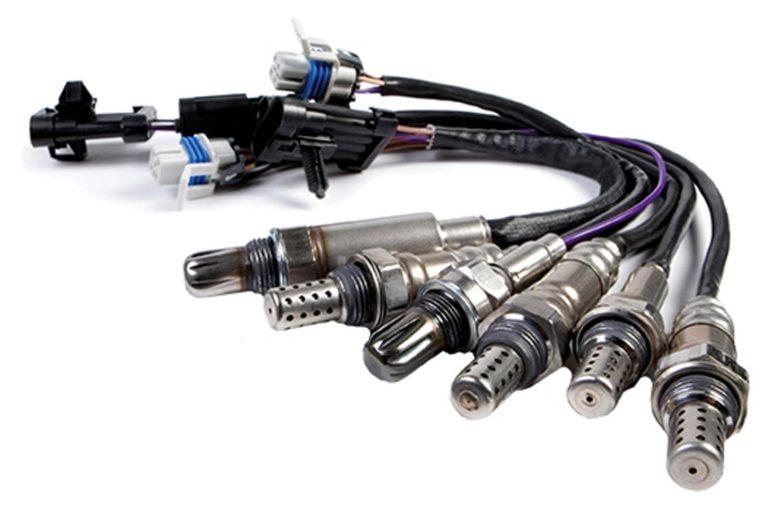The automotive oxygen sensor market plays a vital role in the modern vehicle ecosystem, supporting efforts toward fuel efficiency, emission reduction, and environmental sustainability. With a rising focus on air quality and energy conservation, oxygen sensors are no longer minor components—they have become essential for vehicles equipped with internal combustion engines. This market overview highlights key factors influencing growth, main applications, and industry trends shaping the current and future direction of this critical automotive segment.
Role and Importance of Automotive Oxygen Sensors
Oxygen sensors, often referred to as O2 sensors, are responsible for measuring the concentration of oxygen in a vehicle’s exhaust gases. By analyzing the air-fuel mixture, they help the engine control unit (ECU) adjust combustion processes for maximum efficiency and minimal emissions. These sensors are essential for ensuring vehicles meet environmental standards and for improving fuel economy.
Today’s vehicles often include multiple oxygen sensors, placed before and after the catalytic converter, to monitor both the effectiveness of the converter and the combustion process. Their contribution is not just limited to reducing emissions; they also support better engine performance and diagnostics.
Market Growth Drivers
Several factors are driving growth in the automotive oxygen sensor market:
-
Environmental Regulations: Strict emission laws such as Euro 6, BS VI, and China 6 require manufacturers to include high-precision sensors in vehicles to monitor and control emissions.
-
Fuel Efficiency Demand: Rising fuel costs and environmental awareness have prompted automakers to prioritize systems that improve engine efficiency. Oxygen sensors are key to optimizing fuel consumption.
-
Hybrid Vehicle Integration: As the automotive industry transitions toward hybrid powertrains, oxygen sensors remain crucial in managing the internal combustion portion of hybrid vehicles.
-
Increasing Vehicle Production: With rising global vehicle demand, especially in developing regions, the volume of sensor installations is naturally increasing.
These factors have made oxygen sensors indispensable in the automotive manufacturing process, ensuring their demand remains strong across both original equipment and replacement markets.
Sensor Technology Advancements
The market is seeing a shift from conventional narrowband oxygen sensors to advanced wideband sensors. Wideband sensors provide continuous data on air-fuel ratios, offering greater precision and allowing for more dynamic engine adjustments. This is especially important in modern engines that require fine-tuned fuel control for compliance with tighter emissions rules.
Additionally, the development of smart oxygen sensors is gaining momentum. These sensors include built-in diagnostics, real-time communication capabilities, and greater durability. As vehicle electronics grow more complex, the role of intelligent components like smart sensors becomes even more critical.
Regional Market Insights
The automotive oxygen sensor market is expanding globally, but regional trends vary:
-
North America: A well-established market with consistent demand from both new vehicle production and the aftermarket. Regulations and a large number of aging vehicles fuel sensor replacement needs.
-
Europe: Home to many major automakers and strong sustainability initiatives, Europe emphasizes cutting-edge sensor technologies and green mobility.
-
Asia-Pacific: The most dynamic region in terms of growth, driven by rapid vehicle production, increasing urbanization, and newly implemented emission standards in countries like India and China.
-
Latin America & Middle East: Though developing, these regions are witnessing steady growth as environmental policies become more defined and enforced.
Aftermarket and Replacement Trends
Oxygen sensors wear out over time, typically due to exposure to heat and exhaust byproducts. When they fail, fuel economy drops, emissions rise, and vehicles may fail inspection tests. This creates a strong aftermarket demand for sensor replacement.
Consumers and auto service providers are increasingly relying on plug-and-play sensor solutions that are easy to install and compatible with various vehicle models. Online platforms are also improving accessibility, making the aftermarket a growing and vital part of the overall market.
Competitive Landscape
The global market is dominated by key players like Bosch, Denso, NGK Spark Plug, Delphi Technologies, and Continental, who compete by innovating sensor designs and expanding global distribution.
Strategies used by these companies include:
-
Investing in R&D for smart and wideband sensors
-
Partnering with automakers for OEM supply deals
-
Strengthening aftermarket product lines
-
Adapting products to comply with region-specific emission norms
Their ability to deliver reliable, high-performance sensors is crucial in maintaining leadership and meeting the growing demands of diverse automotive markets.
Conclusion
This overview of the automotive oxygen sensor market highlights a vibrant and essential industry that continues to evolve alongside global automotive trends. With regulatory pressures, technological advancements, and growing environmental awareness pushing forward innovation and adoption, oxygen sensors remain a cornerstone of emission control and engine optimization. As vehicles become smarter and cleaner, the market for these components is poised for long-term, stable growth across both manufacturing and replacement segments.



